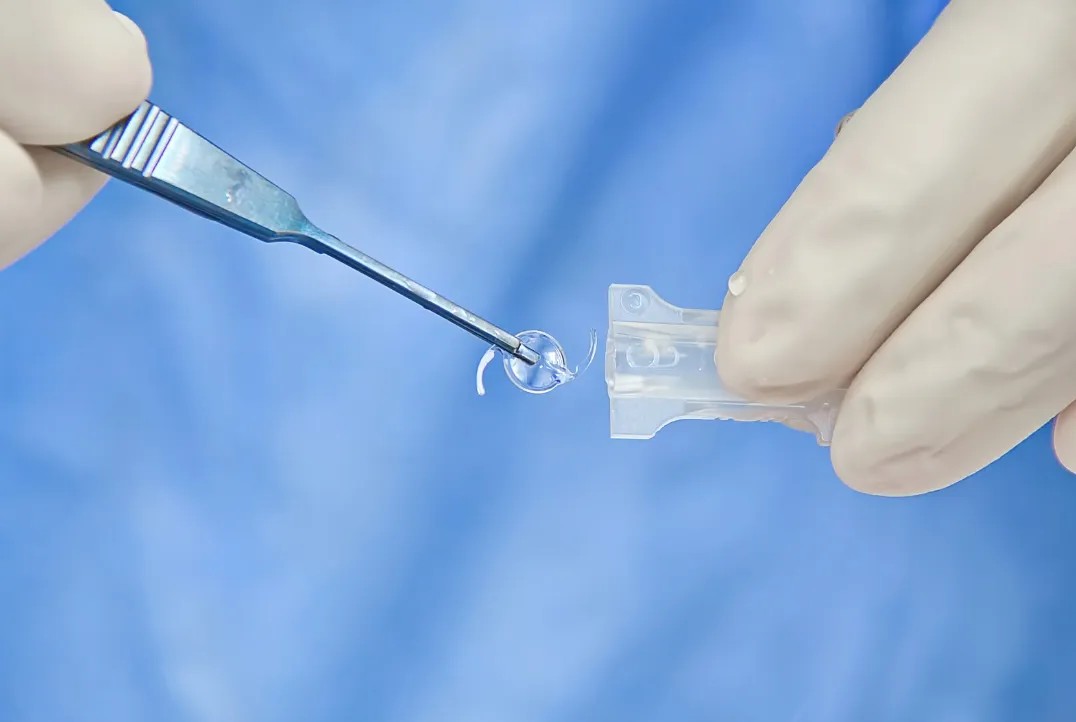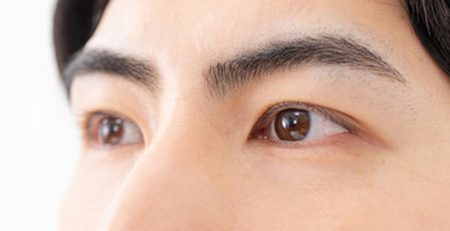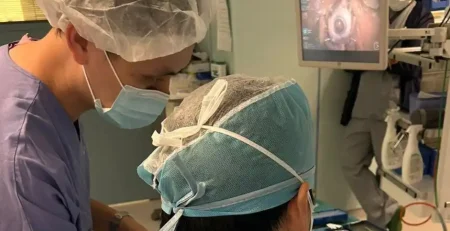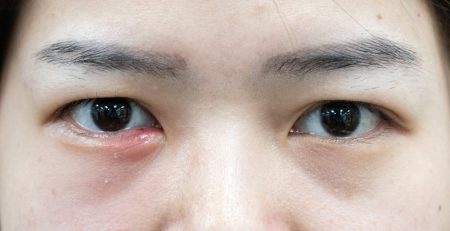Understanding Which Intraocular Lens Could Be Suitable for Your Cataract Surgery
Intraocular lenses (IOLs) are commonly associated with restoring vision after cataract surgery; their potential extends far beyond this procedure. They also provide solutions to those who are not suitable candidates for LASIK, perhaps due to high degrees of myopia or corneas that are too thin or too irregular. This makes IOLs an alternative for those who can’t benefit from laser-based procedures.
At Cornerstone Eye Centre (Novena), Dr Roy understands that choosing the right intraocular lens can feel overwhelming. That’s why we take a personalised approach to every patient, carefully explaining your options and helping you make the best choice for your lifestyle and vision needs. With years of expertise in IOL implantation surgery, we’re here to guide you through this important decision with clear, honest advice.
What Is An Intraocular Lens? (IOL Basics and Function)
An intraocular lens is an artificial lens typically made from biocompatible materials like acrylic. These artificial lenses replace your eye’s natural crystalline lens when it becomes clouded by cataracts. Unlike contact lenses that sit on your eye’s surface, IOLs are surgically implanted inside your eye, where they remain permanently.
How Intraocular Lenses Replace Natural Eye Lenses
Your eye’s natural lens sits behind the coloured part of your eye (the iris) and changes shape to help you focus on objects at different distances. When cataracts develop, this lens becomes cloudy, making it difficult to see clearly, regardless of how much you squint or adjust lighting.
An intraocular lens, or IOL, is a small, clear lens that is implanted inside your eye during cataract surgery. Think of it like a new, permanent lens for your camera. By removing the clouded lens and putting in a new, clear intraocular lens, your vision is restored. The IOL becomes a permanent part of your eye, helping you to see clearly again.
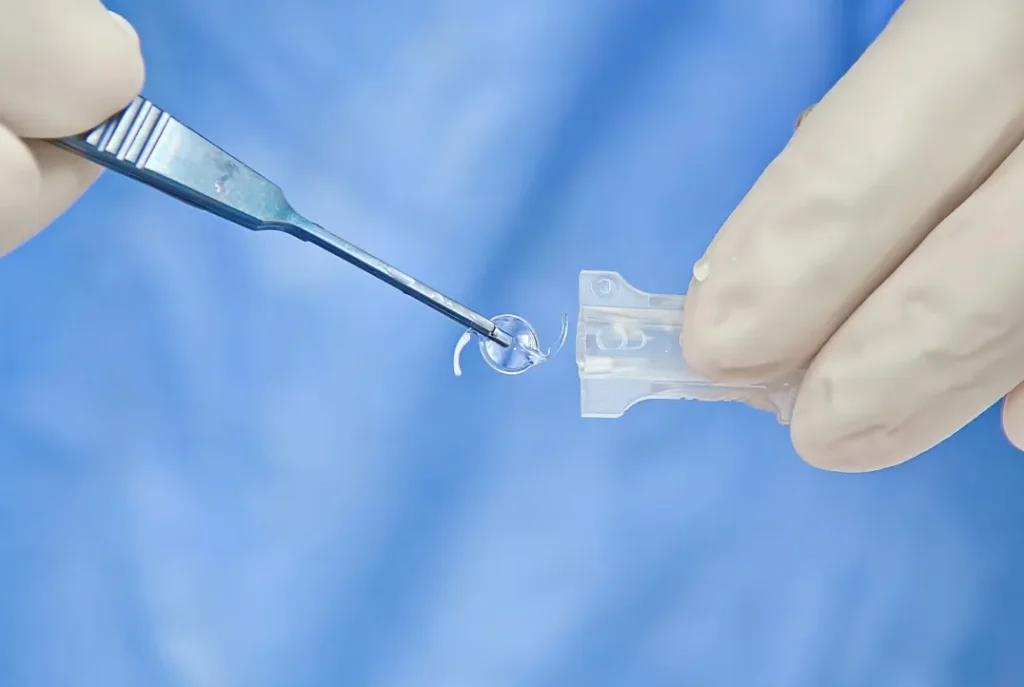
How Intraocular Lenses Replace Natural Eye Lenses
The main purpose of the intraocular lens is to fix your vision after a cataract has been removed. Without an IOL, you would have to wear extremely thick glasses to see. The IOL not only replaces the cloudy lens but can also correct other vision problems you might have, like nearsightedness, farsightedness, or astigmatism. This means that for many people, the surgery can actually improve their overall vision more than it was before the cataract formed.
Understanding the Types of Intraocular Lenses
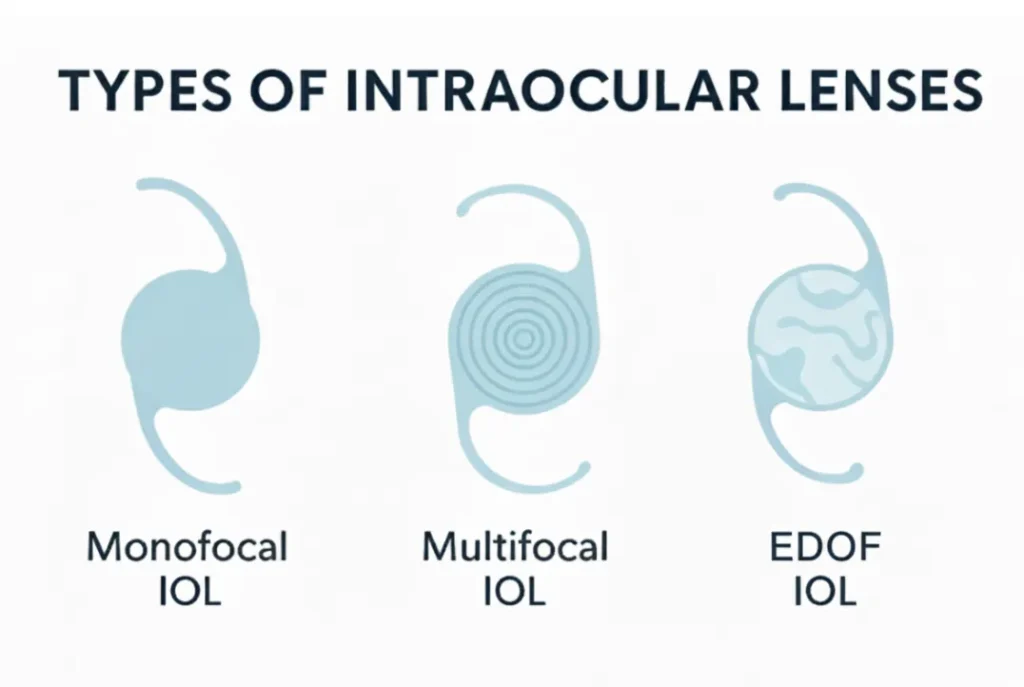
Today’s intraocular lens technology offers multiple options to address different vision needs and lifestyles. Each type has distinct advantages and limitations that your ophthalmologist will discuss with you.
The three main categories of IOLs are monofocal, extended depth of focus (EDOF), and multifocal lenses. Your choice depends on factors like your eye health, your lifestyle, and your personal vision goals.
Understanding these differences is crucial because the type of intraocular lens you choose will affect your vision for years to come. Let’s explore each option in detail to help you understand what might work best for your situation.
Monofocal Intraocular Lens: The Standard Option
Monofocal lenses are the most common type of intraocular lens used in cataract surgery. As the name suggests, they have a single point of focus, and that is usually far vision. These IOLs provide consistently sharp, clear distance vision with minimal side effects. Most people who choose this option will still need reading glasses for close-up work, such as using a phone or reading a book.
Extended Depth of Focus (EDOF) Intraocular Lens: Bridging the Gap
This is a newer addition to the IOL landscape. The EDOF lens is designed to provide a continuous, slightly elongated range of clear vision. Unlike the single point of focus with a monofocal, EDOF lenses stretch that focus, offering good far vision and a workable level of intermediate vision. This might allow you to see your car’s dashboard or a computer screen comfortably without glasses.
While it’s a huge step up from a monofocal lens, it’s important to manage expectations; it may not offer the same sharp near vision as a true multifocal. You might still find yourself reaching for low-power readers for really small print, but you’ll likely be less dependent on glasses overall than with a standard monofocal. It seems to be a good compromise for those who want less spectacle dependence but are perhaps concerned about the visual side effects sometimes associated with multifocal lenses.
Multifocal Intraocular Lens: Near and Distance Vision
Multifocal intraocular lenses are designed to provide clear vision at multiple distances, potentially reducing your dependence on glasses after cataract surgery. These lenses split incoming light between different focal points, allowing you to see both near and far objects clearly. This can be a game-changer for people who want to be able to read and drive without constantly switching between glasses. However, some people might experience a “glare” or “halo” effect around lights, especially at night. For most, this goes away as their brain gets used to the lens.
Toric Intraocular Lens: Correcting Astigmatism
Toric intraocular lenses are specifically designed for patients with astigmatism, a common condition where the cornea is shaped more like a rugby ball than a football. This lens is designed with specific markings to correct this irregular shape and give you clear, crisp vision. By correcting the astigmatism, these lenses can save you from needing to wear special glasses or contacts after surgery.
| IOL Type | Best For | Vision Correction | Glasses Needed? |
| Monofocal | Budget-focused patients | One distance (usually far) | Reading glasses |
| EDOF | Those wanting less dependence on glasses, especially for computer/intermediate work | Far + intermediate (elongated range) | Sometimes (for fine near tasks like small print) |
| Multifocal | Active lifestyles | Near, far & intermediate | Rarely |
| Toric | Astigmatism sufferers | Distance + astigmatism | Sometimes |
Weighing the Risks and Benefits of Intraocular Lens Implants
Like any surgical procedure, intraocular lens implantation carries both benefits and risks that patients should understand before making a decision.
The Major Benefits of Intraocular Lenses
The primary benefit of intraocular lenses is restored clear vision that can improve your quality of life. IOLs provide permanent vision correction that doesn’t require daily maintenance like contact lenses or frequent updates like glasses prescriptions. Once implanted, your IOL should provide stable vision that lasts a lifetime without needing replacement or adjustment.
With an IOL, you can restore your ability to enjoy hobbies like reading or needlepoint, or simply navigate your day with less worry about your eyesight. For example, if you get a monofocal lens, you’ll have great distance vision for watching TV or seeing a movie, and with a multifocal lens, you might be able to read the menu at a restaurant and then look out the window without a problem.

Beyond treating cataracts, modern IOLs offer refractive correction capabilities. During your cataract surgery, your surgeon can simultaneously address other vision problems:
- Myopia (nearsightedness) correction: Finally see distant road signs, television screens, and faces clearly without glasses
- Hyperopia (farsightedness) correction: Read books, use your phone, and perform close-up tasks without straining
- Astigmatism correction: Eliminate the blurry, distorted vision caused by an irregularly shaped cornea
These IOLs are designed to be a permanent solution. Once implanted, they provide stable vision that lasts a lifetime, freeing you from the need to change prescriptions frequently. This is due to the design of these lenses, which are engineered to provide a specific focusing power that complements the natural function of the eye.
Potential Risks and Side Effects
Just like with any surgery, there are some risks, though they are rare. Some possible side effects include infection, inflammation, or the lens shifting out of place. Most of these can be treated. After the surgery, some people might also notice halos, glares, or starbursts around lights, especially at night, which usually fade over time.
It’s important to discuss these risks with your eye doctor, as they can explain how they will manage them and make sure you’re the right candidate for the procedure.
Cost for Intraocular Lenses in Singapore
Understanding the financial aspects of intraocular lens surgery helps you plan for this important investment in your vision. Costs can vary considerably depending on the type of IOL you choose.
A Breakdown of IOL Surgery Costs in Singapore
The cost of intraocular lenses depends on the type of lens, the complexity of surgery, and the clinic. This section explains the usual price range:
- The cost of cataract surgery in Singapore can range from $6,000 to $12,000 or more per eye.
- Premium lenses like multifocal or toric IOLs may cost more.
- Medisave can be used to cover a portion of cataract surgery costs. The amount you can use depends on the type of procedure. You can typically withdraw up to $3,210 per eye from your own or a family member’s Medisave account.
- Private insurance policies vary in their coverage of cataract surgery and premium IOLs. It’s important to check with your insurance provider about specific coverage details.
Whilst this represents a considerable financial investment, many patients find the improved vision quality and reduced dependence on glasses justifies the additional expense.
At Cornerstone Eye Centre (Novena), Dr Roy provide transparent pricing information during your consultation so you can make an appropriate financial decision.
Choosing the Best IOL: Factors to Consider
Selecting the right intraocular lens requires careful consideration of multiple factors beyond just cost. Your lifestyle, visual demands, and personal preferences all play important roles in determining which IOL will provide the best results for you.
The “best” IOL varies from person to person, which is why a thorough consultation with an experienced ophthalmologist is essential. They’ll evaluate your specific eye anatomy, health status, and visual goals to recommend the most suitable options.
Questions to Ask Your Ophthalmologist
Before making your IOL choice, consider asking your surgeon about their experience with different lens types and what results you can realistically expect.
Here are a few to get you started:
- What type of intraocular lens do you recommend for me, and why?
- What are the potential side effects of the lens you recommend?
- Will I still need glasses for any activities after the surgery?
- What percentage of your patients achieve their visual goals with this lens type?
What to Expect: From Consultation to Recovery
Understanding the entire process from initial consultation through complete recovery helps reduce anxiety and ensures you’re well-prepared for your intraocular lens surgery journey.
Pre-Surgery Consultation
Your first step is the pre-surgery consultation. During this visit, your eye doctor will perform a comprehensive eye exam to check the health of your eyes. This typically involves dilating your pupils and taking detailed measurements of your cornea, eye length, and overall eye health. This is a very important step to make sure you get the best vision possible after the surgery.
Post-Surgery Recovery and Care
Recovery from intraocular lens surgery is typically straightforward, with most patients experiencing improved vision within 24-48 hours. You’ll use prescription eye drops for several weeks to prevent infection and reduce inflammation while your eye heals.
Most patients can return to normal activities within a few days, though you’ll need to avoid heavy lifting, swimming, or rubbing your eyes for several weeks. Your eye doctor will provide detailed post-operative instructions and schedule follow-up appointments to monitor your healing progress.
Complete visual stabilisation usually occurs within 4-6 weeks, at which point you can get an updated glasses prescription if needed.
Take the Next Step
Choosing the right intraocular lens (IOL) can be tough. With so many options available, it’s easy to feel overwhelmed. Each lens offers different benefits, from improving distance vision and reading to correcting astigmatism and fitting your lifestyle.
Book a Cataract & Glaucoma Screening with Dr. Roy Tan at Cornerstone Eye Centre (Novena). At just $88, this screening provides a comprehensive eye health assessment and a personalised treatment plan.
Book a Cataract & Glaucoma Screening for $88
Don’t wait for symptoms to appear before taking action. Early detection is key to preserving your vision.
At Dr Roy Tan’s clinic, we offer a comprehensive Cataract & Glaucoma Screening for just $88. This screening is designed to assess your eye health thoroughly, identify any early indicators of glaucoma or cataracts, and discuss your personalised options if either condition is detected.

